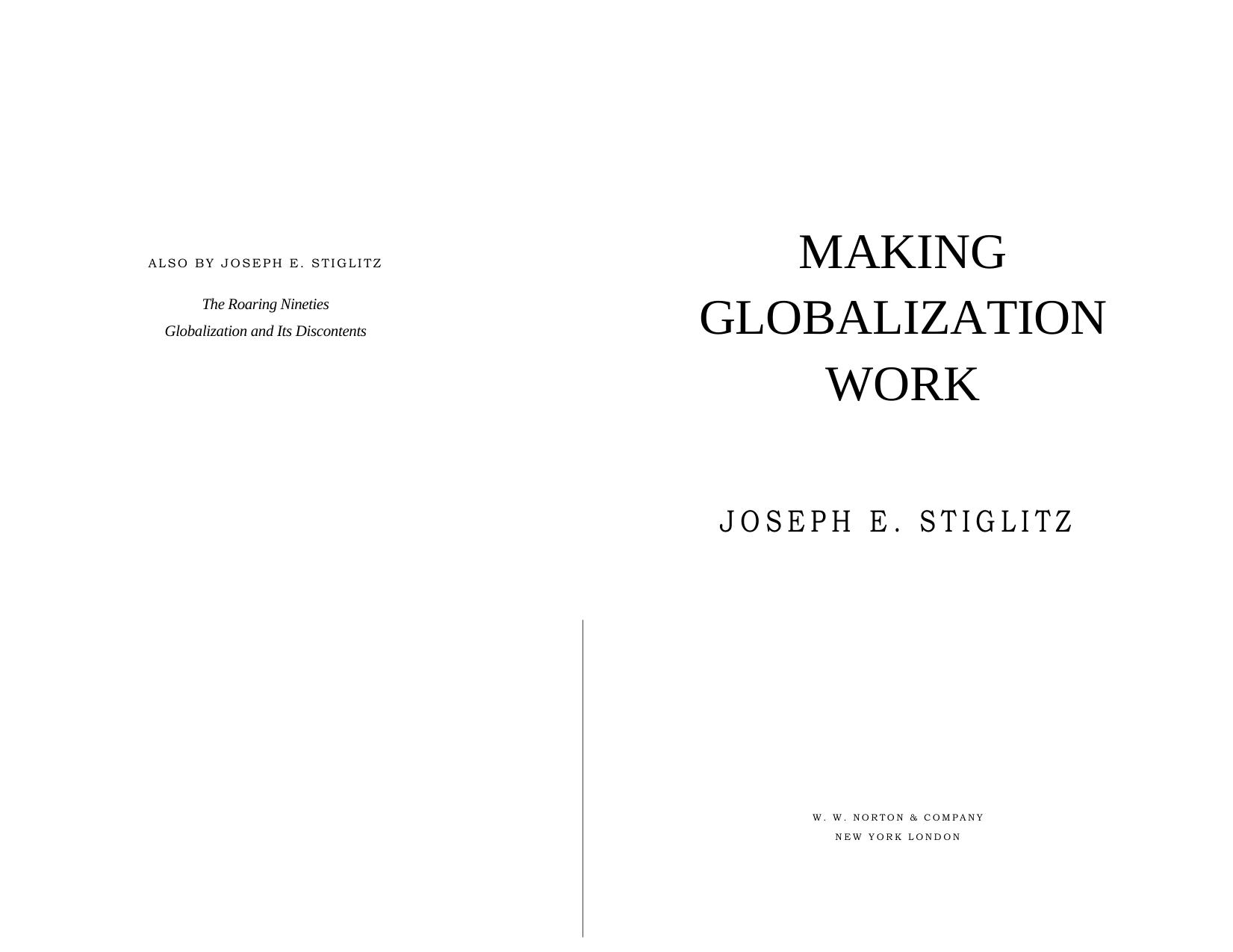Making Globalization Work by Joseph E. Stiglitz

Author:Joseph E. Stiglitz [Stiglitz, Joseph E.]
Language: eng
Format: azw3, pdf
Publisher: W. W. Norton & Company
Published: 2007-09-17T04:00:00+00:00
The Rainforest Initiative: Improving Efficiency
Efficiency requires atmospheric greenhouse gas concentrations to be reduced in the most cost-effective way. Most attention has been focused on the reduction of emissions, but there is another way: to remove carbon dioxide from the atmosphere and store it. That is what trees do. In photosynthesis, plants take carbon dioxide out of the atmosphere, emitting oxygen and storing the carbon. Thus, planting forests reduces the concentration of greenhouse gases, while deforestation makes matters worse. Deforestation is bad for the atmosphere for two reasons: first, there are fewer trees converting carbon dioxide into oxygen; second, carbon that is stored in the wood is released into the atmosphere as the wood is burned. In recent years, about 20 percent of the increase in atmospheric concentrations of greenhouse gases came from deforestation. In other words, the damage done by deforestation is comparable to the damage done by the world’s largest polluter, the United States.
But the 2.7 billion people in the over sixty developing countries that are home to these tropical forests are not being compensated for their valuable environmental services. Tropical rainforests not only reduce the level of carbon in the atmosphere; they help to preserve biodiversity. As we noted in chapter 4, many medicines have been derived from this precious resource. Compensation would not only be fair and help the economies of the rainforest countries; it would provide incentives for them to maintain their forests, which would be of enormous environmental benefit to all.
We can obtain rough calculations of the carbon benefits of reducing the annual rate of deforestation by, say, a modest 20 percent. At the price of $30 per ton of carbon, the annual value of the avoided deforestation—the value of the increase in atmospheric carbon that would have occurred as a direct result of those trees being cut down—is between $30 billion and $40 billion a year. (By comparison, all foreign assistance to developing countries is around $60 billion.) In addition, as we have noted, the forests “clean” carbon dioxide out of the atmosphere. The annual “negative emissions” of the rainforest countries are estimated (using the $30 a ton figure) at some $100 billion a year.20
While Kyoto recognized the role that planting forests could play—countries are given “credit” for planting trees—it did nothing about deforestation. This was a big mistake, for it makes countries like Papua New Guinea doubly better off if they cut down their ancient hardwood trees and replant: they get money from both the cut trees and the replanting. But this makes no sense—countries should be given incentives to maintain their forests.21
In principle, this would be relatively easy to do under the carbon trading system. Energy companies in Europe are allowed to buy “carbon offsets” (allowing them to emit more carbon than they otherwise would be allowed to do) by paying for the planting of a forest (“carbon sequestration”) in some developing country. Led by Papua New Guinea and Costa Rica, a group of developing countries calling themselves the Rainforest Coalition put
Download
Making Globalization Work by Joseph E. Stiglitz.pdf
This site does not store any files on its server. We only index and link to content provided by other sites. Please contact the content providers to delete copyright contents if any and email us, we'll remove relevant links or contents immediately.
| Anthropology | Archaeology |
| Philosophy | Politics & Government |
| Social Sciences | Sociology |
| Women's Studies |
The Secret History by Donna Tartt(18216)
The Social Justice Warrior Handbook by Lisa De Pasquale(11960)
Thirteen Reasons Why by Jay Asher(8468)
This Is How You Lose Her by Junot Diaz(6458)
Weapons of Math Destruction by Cathy O'Neil(5848)
Zero to One by Peter Thiel(5505)
Beartown by Fredrik Backman(5371)
The Myth of the Strong Leader by Archie Brown(5246)
The Fire Next Time by James Baldwin(5029)
How Democracies Die by Steven Levitsky & Daniel Ziblatt(4969)
Promise Me, Dad by Joe Biden(4915)
Stone's Rules by Roger Stone(4870)
100 Deadly Skills by Clint Emerson(4699)
A Higher Loyalty: Truth, Lies, and Leadership by James Comey(4563)
Rise and Kill First by Ronen Bergman(4551)
Secrecy World by Jake Bernstein(4404)
The David Icke Guide to the Global Conspiracy (and how to end it) by David Icke(4390)
The Farm by Tom Rob Smith(4331)
The Doomsday Machine by Daniel Ellsberg(4252)
